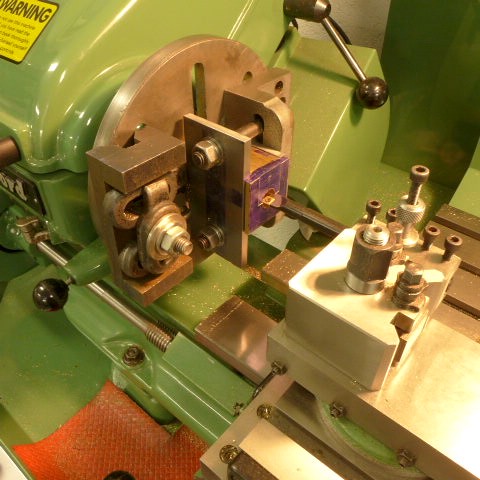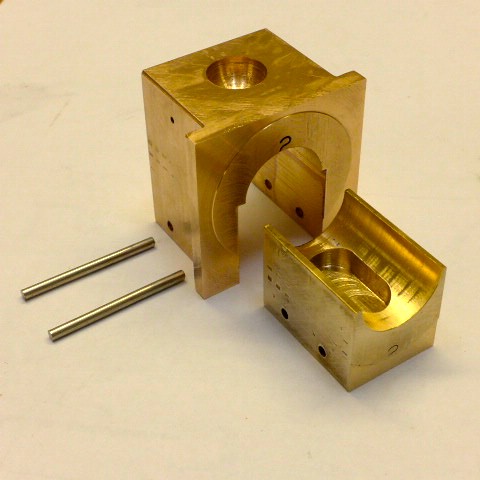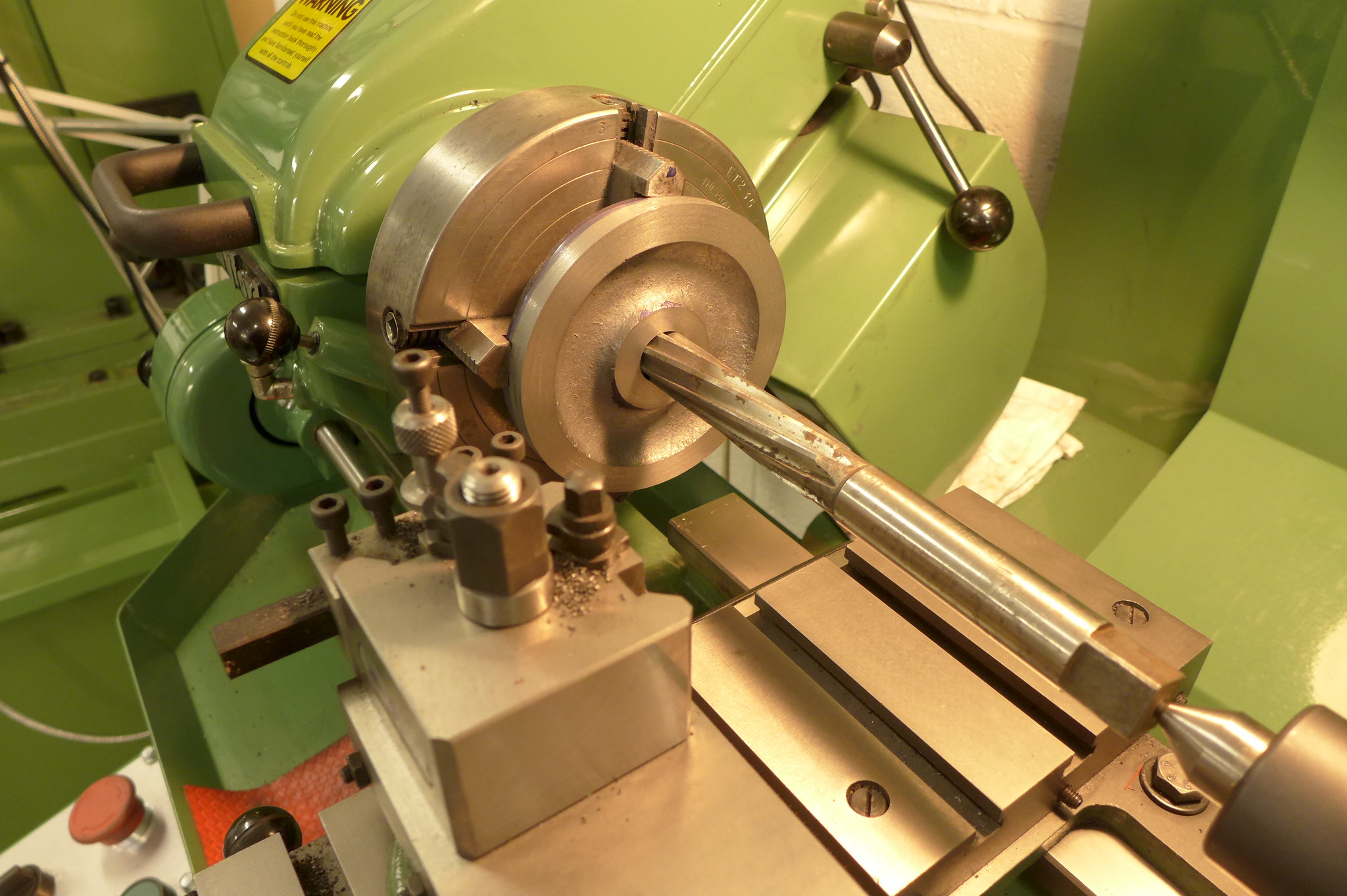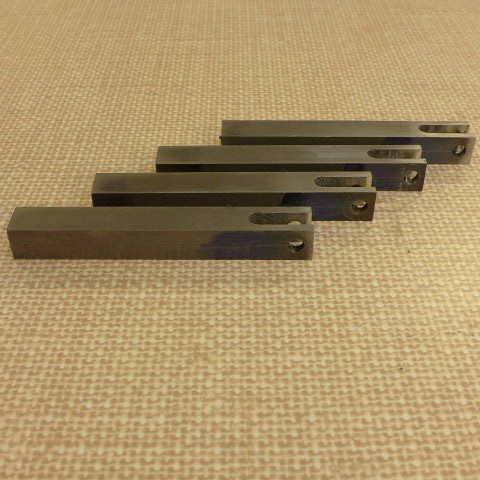barlowworks
Statesman
  Now finished my other projects, Britannia here I come
Now finished my other projects, Britannia here I come
Posts: 878 
|
Post by barlowworks on Jul 13, 2017 15:36:26 GMT
The icon is the centre one on the view on photo page screen. When you hover over it it should say something like share photo. When you lick on it it goes to a white screen with the share info choices. That's where you copy the link to paste into the quick reply window.
Mike
|
|
barlowworks
Statesman
  Now finished my other projects, Britannia here I come
Now finished my other projects, Britannia here I come
Posts: 878 
|
Post by barlowworks on Jul 13, 2017 16:08:43 GMT
Just clicked on your latest link and I can see the photo on Flickr so you have made some progress.
Mike
|
|
|
|
Post by chester on Jul 13, 2017 16:29:57 GMT
Hi Malcolm i have just clicked the link and it shows a nice clean green machine i think you have cracked it .Graham
|
|
rrmrd66
Part of the e-furniture

Posts: 339 
|
Post by rrmrd66 on Jul 13, 2017 18:12:50 GMT
|
|
rrmrd66
Part of the e-furniture

Posts: 339 
|
Post by rrmrd66 on Jul 13, 2017 18:16:43 GMT
Yahoo! I think I have it.
With apologies to Henry Higgins
I will try and continue the Hunslet build with this new found skill.
Thanks for tips guys.
Malcolm
|
|
rrmrd66
Part of the e-furniture

Posts: 339 
|
Post by rrmrd66 on Jul 13, 2017 18:44:27 GMT
Right! Let us hope that I have now solved the mystery of uploading pictures via Flickr, although I am still not too sure I will remember what I did in the end. I believe I left you on the last post with now blocked picture via Photobucket saying I would go and practice hand riveting, As you will see from the above post plus picture I did just that so I will not repeat the picture. After making sure that the rivets were flush with the frame sides ( I did as Roger did in his Speedy build and milled them to within a gnats whatsit of the frame side and tickled them up with a file). I was able to place them back to back on the mill and machine the two pairs of horn blocks as one. I hoped that this would result in perfectly matched and parallel sided horns. However a long series 5/8" end mill thought otherwise and even after taking three final "spring" cuts still managed to get a taper of about .005" per side. A bit of gentle filing though soon got the axle blocks fitting and running smoothly.  Side frames plus horns being milled together. Side frames plus horns being milled together. by Malcolm HARWOOD, on Flickr Note the two vices. One from Warco made in UK. Very nice but quite shallow jaws ( extra deep ones are an extra) and the other SOBA India via Axminster Tool ( I had a pile of gift vouchers from Christmas... so much more useful than socks). Quality OK and very solid. The observant will note the Toolmakers jack on the right hand side of the picture. I wonder how many tool making apprentices. like me, have had a unused set of these things lying in their toolboxes for 50 years? Maybe we should start a new thread on a "you show me yours and I will show you mine" basis? I am now half way through making the axle boxes with solid keeps and will report back shortly. Hopefully with pictures! I wonder when Flickr will catch on and start charging for 3rd party hosting? Thanks for reading Cheers Malcolm |
|
barlowworks
Statesman
  Now finished my other projects, Britannia here I come
Now finished my other projects, Britannia here I come
Posts: 878 
|
Post by barlowworks on Jul 13, 2017 19:35:21 GMT
Top Man.  Mike |
|
rrmrd66
Part of the e-furniture

Posts: 339 
|
Post by rrmrd66 on Jul 25, 2017 19:21:40 GMT
Evening all Progress on two fronts to report. The axle blocks and keeps are finished. I bored the axle boxes on a face plate with an angle bracket, straps and counter weights. A bit Heath-Robinson but it works. The jaws on my 4 jaw chuck were not deep enough to hold a pair of axle boxes.  P1010127 P1010127 by Malcolm HARWOOD, on Flickr After milling the pocket for the spring push rod in the top of the axle block with a 1/2" dia bull nosed end mill I drilled the lubrication holes as per drawing. Those interested in these things will note the Dremel drill and stand. Hardly tool room kit, I hear you say. But very useful for doing the electrics in Senior Managements dolls houses and as long as you take it steady it is just about OK. By the way, a No 55 drill without negative rake on the cutting edge when breaking through brass doesn't half go ping. Anybody ken to make a new thread as per my last post on "tools in my toolbox that have not seen the light of day for 50 years"? Note the toolmakers vice, Never used. Worked perfectly with a bit of degreasing and derusting.  P1010128 P1010128 by Malcolm HARWOOD, on Flickr Here is one of the finished axle blocks with brass keep and felt pad /oil reservoir.  P1010129 P1010129 by Malcolm HARWOOD, on Flickr When I came to setting the side frame distance I did not have a vernier gauge large enough so I made a simple jig out of 2x1/4" plate. Bolted together and with 2x4mm end mill slots were just right to locate the side frames..  P1010124 P1010124 by Malcolm HARWOOD, on Flickr I couldn't resist just trying them out.  P1010125 P1010125 by Malcolm HARWOOD, on Flickr Here we have a full "dummy" set up. The objective here was to make sure that the axle shafts rotated in their axle blocks without undue binding. Fortunately they ran very smoothly.  P1010130 P1010130 by Malcolm HARWOOD, on Flickr Finally here with the front beam all set up and bolted down I am spotting though to fix the drag beam to the side frames Note the setting gauge and the two set squares so that I know that the frames are the correct distance apart and the sides are vertical and parallel. The sharp eyed will notice my poor mans surface plate. A scrap piece of 10mm float glass, foc, from the local glass cutter.  P1010131 P1010131 by Malcolm HARWOOD, on Flickr Many thanks to Roger of Speedy fame for his tips on loading pictures from Flickr. I thought I had the hang of it last time but had forgotten how to do it. Grrr! Thanks for reading my ramblings Malcolm |
|
Lisa
Statesman
 
Posts: 806 
|
Post by Lisa on Jul 26, 2017 4:49:42 GMT
The sharp eyed will notice my poor man's surface plate. A scrap piece of 10mm float glass, foc, from the local glass cutter. Mine was pinched from a broken photocopier, does the job. Those guides for holding the frames are a nifty idea Malcolm, nice work. |
|
|
|
Post by ilvaporista on Jul 26, 2017 5:47:29 GMT
For a poor mans surface plate I bought a marble tile from Wickes. £4.99 it's about 20" x 10" x 1/2" thick. Checked with a straight edge and feelers it's pretty good. My piece of plate glass was ruined by tiny bits of spatter from shielded welding wire. From that I learned that welding and glass should not be neighbours.
|
|
dscott
Elder Statesman
  
Posts: 2,440
|
Post by dscott on Jul 27, 2017 0:10:32 GMT
Also, angle grinders, me currently having 3 of the beasts?
Thinking of uses for 3 grinders...
Re-profiling the raised track with them mounted on a trolley!!
Getting modern holes in jeans for a teenage Daughter!!
No, cheap right angle drives with mounting holes and two more
spare spanners!!!
David.
|
|
rrmrd66
Part of the e-furniture

Posts: 339 
|
Post by rrmrd66 on Aug 23, 2017 19:24:52 GMT
Evening everybody. Further progress to report on the Hunslet build. The cast iron wheel casting was faced in the four jaw chuck. The outer diameter is as received from the foundry, fettled with a hand grinder. The four jaw grips on the conical portion of the wheel allowing the outer flange diameter to be turned true. A centre drill and gradual opening up to 18.5mm diameter (cheaper than a 47/64" dia. drill) and finishing off with a 3/4" dia hand reamer. Can't remember if this is good practice but have not got a 3/4" machine reamer and the 3/4" dia. axle was a good fit.  P1010141 P1010141 by Malcolm HARWOOD, on Flickr Next, I purchased a 2MT hardened adaptor with a "soft end" and turned it to 3/4" to provide a location for the wheel in order to face "the other side" and turn the slight conical tire and add a bevel.  P1010142 P1010142 by Malcolm HARWOOD, on Flickr The wheels completed were now completed to final size.  P1010143 P1010143 by Malcolm HARWOOD, on Flickr I then moved onto the fly cranks. Reeves had provided four PB castings but I struggled to hold them in the four jaw chuck as they were all slightly different in dimensions I was not confident I would find a good center for the 3/4" dia axle shaft and even more so the accuracy of the 7/16" dia crank pin hole the Don Young (DY) specifically said had to be 1.15625" from the axle shaft center line. As I had four to make I reasoned that the last thing I needed was four slightly different fly crank center lengths. I can't imagine that this is an aid to smooth running. DY suggests making them from MS and starting with 2x1/2' MS flat bar. This I did and had the parallel edges with which to mount it in the milling machine and accurately gauge the center line spacing with the help of the x axis DRO. As can be seen from the next picture I have invested in a rotary table, a Vertex H6. I hope to write a crit' of it in the tools section as it is not without its foibles. All in all though, a quality piece of kit. A plus point was that the bore of the H6 will accept a 2MT taper tool and so the wheel turning spindle doubles as a milling fixture as both wheel and crank have a 3/4" dia bore to locate upon.  P1010144 P1010144 by Malcolm HARWOOD, on Flickr The large 1.375" dia "big end" was easy to do. The "little end" allowed me to reacquaint myself with the dangers of climb milling an unsupported work piece! However, one soon remembers and I turned up a small brass post that locates the 7/16" bore securely to the slot in the rotary table and away we went. The final 3/8" "little end" outer radius has to be completed by hand filing. Oh for one of those CNC mill thingies.  P1010146 P1010146 by Malcolm HARWOOD, on Flickr The crank pins and spacers are a relatively simple exercise in turning and are shown in the final picture of this update, complete with axle shaft, about to be faced, turned to length and centred to aid quartering. The high tech parts holder system is courtesy of a Sainsbury's Purple Sprouting Broccoli tray. P1010146 by Malcolm HARWOOD, on Flickr Next step is turning the eccentric sheaves. Should be interesting, parting off 2" dia MS bar! Thanks for reading. |
|
rrmrd66
Part of the e-furniture

Posts: 339 
|
Post by rrmrd66 on Sept 29, 2017 15:22:08 GMT
Evening all
Just spent a frustrating hour trying to update my build diary with Flickr pictures but cannot get them loaded into the post.
I am on a Mac
Have got Speedy Rodger"s guide. This worked fine last post.
Anybody else having problems? Has anything changed since my last post in August
Cheers
Malcolm
|
|
dscott
Elder Statesman
  
Posts: 2,440
|
Post by dscott on Oct 11, 2017 23:44:58 GMT
Hi,
My passion for filing buttons as they are called? Just two turned thick washers to your diameter of the little end. Put in an axle with a clamp and file until you just rotate the washers go down to fine file and finish off with paper or emery cloth. Perfect.
David.
|
|
rrmrd66
Part of the e-furniture

Posts: 339 
|
Post by rrmrd66 on Oct 12, 2017 15:53:39 GMT
Evening all Back after a short break. Worked out why I couldn't post pics in the end. Any how on with the build which I have spent a huge amount of time on. Remember that this is my first ever engine build. The eccentric straps have to be cut in half, reduced and machined to bring them to near round before boring in the lathe. I left the height of the top portion about 12-15 thou oversize to allow for eventual trimming along with the connecting rods that join up to the expansion link.  P1010161 P1010161 by Malcolm HARWOOD, on Flickr The eccentric sheaves are a bit of a b****r. They have to be cut from 2" dia MS bar. That should test your parting off skills as it is easier to do 5 at once with a form tool and then part off. The form tool should generate a true cylindrical surface. Mine did not so a bit of fettling with the parting off tool (being fed sideways!) soon solved the slight taper i managed to get. The split rings I made below allowed me to grip the sheaves in the four jaw for facing off to finished width without crushing the 60 thou shoulders or damaging he bearing surface.  P1010148 P1010148 by Malcolm HARWOOD, on Flickr Next came the connecting rods, DY suggests a fabrication with brazing. I chickened out and milled mine from 1/2" sq. MS bar. The clevis at the end I did with a 1/4"slot drill.  P1010167 P1010167 by Malcolm HARWOOD, on Flickr After milling I marked the centre for the hole that will affix to the expansion link. I am aiming to get the 4 5/8" centres (not the 4 7/8" as DY says, I think he may have added up wrong) spot on. My thanks to Julian for pointing this out and running all the dimensions through the Bill Hall spread sheet. Do you like my newly acquired analogue height gauge. It works with ball bearings. Brilliant. Never seen one before. It was a gift from a friend, along with the surface plate. Thanks Peter.  P1010168 P1010168 by Malcolm HARWOOD, on Flickr The foot for the connecting rod was made from MS bar. I was not keen on DY's butt joint idea so made a more positive location. To my delight the brazing went fwell achieving good penetration.  P1010169 P1010169 by Malcolm HARWOOD, on Flickr That's all for now. more later Thanks fr reading Malcolm |
|
jma1009
Elder Statesman
  
Posts: 5,922
|
Post by jma1009 on Oct 12, 2017 20:12:08 GMT
Hi Malcolm,
You are doing a grand job there!
I do like bolted on eccentric straps.
Cheers,
Julian
|
|
dscott
Elder Statesman
  
Posts: 2,440
|
Post by dscott on Oct 15, 2017 23:05:00 GMT
I extended the castings with bits silver soldered on then machined a slot for them all to sit in.
The second screw fitting into the parent metal if anything may come off at a later date.
I did a jig to make them all come out the same length rounding off the ends into the slots to match,
David.
|
|
jools
E-xcellent poster
  
Posts: 200
|
Post by jools on Oct 15, 2017 23:39:38 GMT
Hi Malcolm,some nice work and progress there.
I too have a vertex rotary table identical to yours. I have always had problems fixing work to be concentric to the centre for accurate radius machining - I was unaware the centre hole was an MT2 taper !
What I am searching for now is a an MT2 taper shaft with a tapped end to allow me to use this as the mounting reference for work. Did you manufacture your tool shown or was it purchased ? I would be interested to know where you sourced it if so.
cheers
Jools
|
|
rrmrd66
Part of the e-furniture

Posts: 339 
|
Post by rrmrd66 on Oct 17, 2017 17:58:57 GMT
Hi Malcolm,some nice work and progress there. I too have a vertex rotary table identical to yours. I have always had problems fixing work to be concentric to the centre for accurate radius machining - I was unaware the centre hole was an MT2 taper ! What I am searching for now is a an MT2 taper shaft with a tapped end to allow me to use this as the mounting reference for work. Did you manufacture your tool shown or was it purchased ? I would be interested to know where you sourced it if so. cheers Jools Hi Jools Try this: www.rdgtools.co.uk/acatalog/ADAPTOR-FOR-ROTARY-TABLE-6--MYFORD-THREAD-898698.htmlor this maybe: Chronos ref BEA2T The MT2 arbor fits into the Myford spindleas well butmaybe you know this.Useful for turning wheels and then transferring to the Verte without disturbing the eccentricity (or lack of it) Cheers Malcolm |
|
dscott
Elder Statesman
  
Posts: 2,440
|
Post by dscott on Oct 17, 2017 22:32:27 GMT
I have been looking beyond your parts and admiring your milling machine.
Currently getting ready to purchase the same? Yes they have the same table
travel of a Bridgeport with the Warco coming at the top of my table on weight
of the machine.
David.
|
|